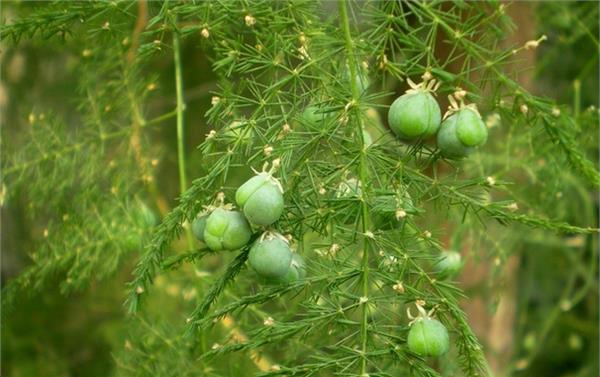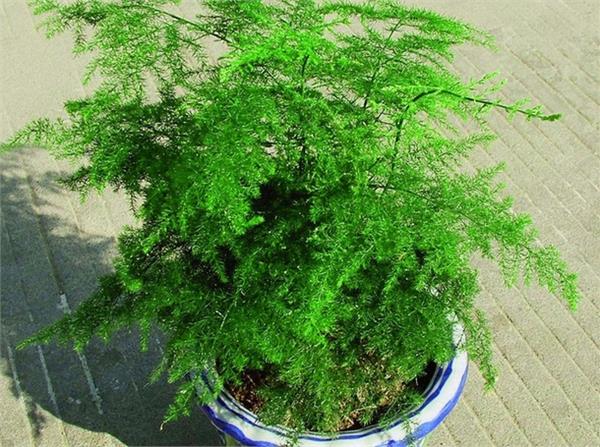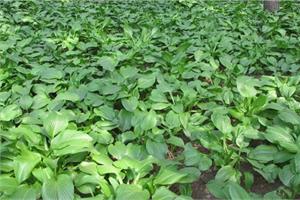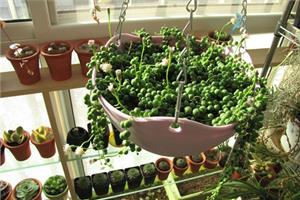What about the yellowing of asparagus leaves? the reason why asparagus leaves turn yellow
In the process of indoor breeding of asparagus, yellowing of leaves is a more common phenomenon, and there are many possible reasons for yellowing of leaves of asparagus. Next, let's summarize them one by one.

What if the leaves of asparagus turn yellow?
Asparagus is a shade-loving plant, likes a warm and humid climate, can not bear cold, but also afraid of summer heat. The temperature in winter should not be lower than 10 ℃. If it falls below 5 ℃, it will be damaged by beads. If the summer temperature exceeds 5 ℃, the growth will stop and the leaves will turn yellow. The requirements of light conditions are relatively strict, neither year-round shade, but also can not withstand the sun exposure, exposure in the hot sun for half a day will be withered and yellow. Therefore, it is appropriate to migrate asparagus to indoor culture and grow under scattered light to avoid direct sunlight. Keep the soil fertile, draining and breathable, and keep the indoor temperature above 5 ℃ in winter in order to make it safe through the winter.
The reason for the yellowing of asparagus leaves may be due to the light is too strong, water evaporation is too fast, the basin soil is too dry, the permeability of the basin is not strong, serious leaves will fall, wither and so on. In order to make asparagus with luxuriant branches, emerald green color and straight stem, we should pay attention to applying more nitrogen and potassium fertilizer. Generally apply once every half a month or so, at the same time to protect the adequacy of water in the basin at any time.
What if the leaves of asparagus turn yellow?
The main reasons for the yellowing of asparagus leaves are as follows:
1. Strong light exposure. Asparagus culture like semi-shade, summer should not have a strong column of direct sunlight, otherwise it will cause branches and leaves withered and yellow. The solution is to move the flowerpot to a cool place and spray more water on the branches and leaves to increase humidity.
2. Watering is wrong. Asparagus likes to be wet, but it is also too wet and waterlogged, so it is best to keep the basin soil dry and wet, generally not dry and watered thoroughly, but do not let the basin surface be watered too much when watering. If there is too much watering, you can not water temporarily, but only spray water to the leaves to moisturize asparagus.
3. Improper fertilization. Excessive fertilization or application of immature fertilizer will cause asparagus leaves to yellowing and shedding. On the other hand, the nutrient of the planted pot soil is too poor, which will also lead to the yellowing of asparagus leaves. Therefore, when fertilizing, we should pay attention to thin application, but more times but less, and use rotten fertilizer, and for the existing situation, we can take to change the basin soil to solve. It is worth noting that it is not suitable to apply fertilizer in winter low temperature period and summer high temperature period.

4. Gas poisoning. Asparagus is very afraid of smoke and dust. if it is often attacked by harmful gases such as smoke and dust, asparagus will be poisoned with yellow branches and leaves. If this happens, the flowerpot should be moved away from the original position in time, and the work of foliar sprinkler and dust removal should be increased.
5. Insect pests. Shell insects are the most common pest in asparagus culture. When shell insects are found, they should be wiped off with wet cloth strips in time. In serious cases, they should be bought at the drugstore for prevention and control, and the pot soil should be changed in time. When changing the basin soil, the old residual roots can be cut off to reduce nutrient consumption.
6. Winter management is not in place. Asparagus culture should keep it at a certain temperature, especially in the sunny position in winter. If asparagus is placed in places that lack light, poor ventilation and cold for a long time, it is easy to make the leaves of asparagus withered and yellow. In winter, the temperature of asparagus culture should not be lower than 12 ℃, and it should be placed in a place with good light, and watering can be reduced appropriately.
The above is the relevant introduction of this article, I believe you have a simple understanding of this after reading it, if necessary, you can continue to pay attention to the No. 1 home network for more information.
Related
- Wuhan Hospital Iron Tree Blooming Result Was Instantly Frightened by the Gardener Master
- Which variety of camellia is the most fragrant and best? Which one do you like best?
- What is the small blue coat, the breeding methods and matters needing attention of the succulent plant
- Dormancy time and maintenance management of succulent plants during dormancy
- Minas succulent how to raise, Minas succulent plant pictures
- What are the varieties of winter succulent plants
- How to raise succulent plants in twelve rolls? let's take a look at some experience of breeding twelve rolls.
- Attention should be paid to water control for succulent plants during dormant period (winter and summer)
- Watering experience of twelve rolls of succulent plants
- Techniques for fertilizing succulent plants. An article will let you know how to fertilize succulent plants.



